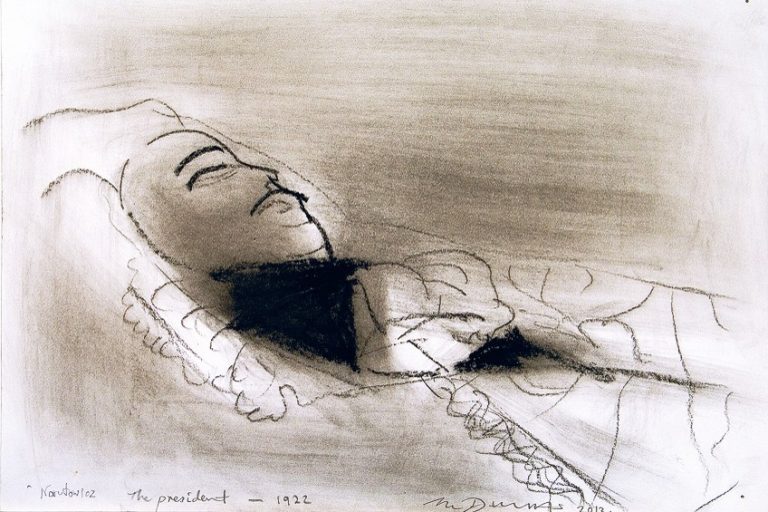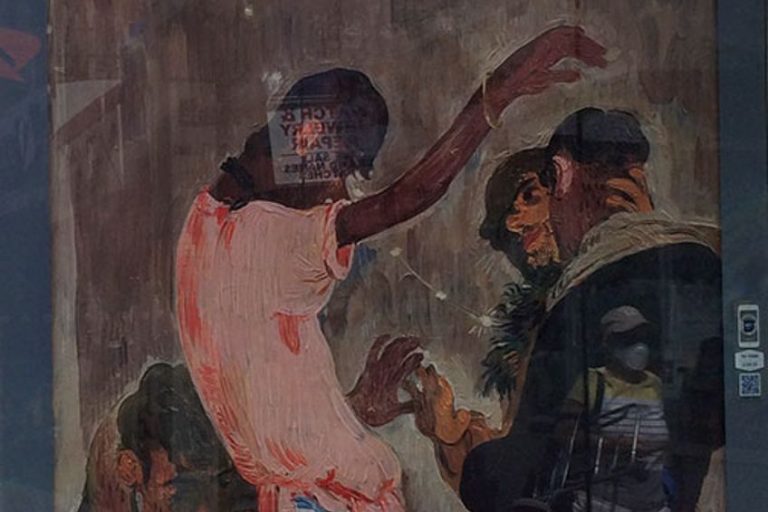Edgar Degas – Exploring the Life and Art of this French Painter
Impressionist painter Edgar Degas was a highly celebrated painter and sculptor of the 19th century. Widely viewed as one of the first notable Impressionist artists who helped to start the art movement, Degas’ career was quite unusual at times due to him being viewed as a controversial individual. Painting until his eyesight completely deteriorated, Degas built up an expansive career through the sheer number of paintings and some sculptures that he produced. Below, we will be taking a look at the interesting life of Edgar Degas.
Who Was Edgar Degas?
| Years Lived | 1834 – 1917 |
| Nationality | French |
| Where the Artist is Currently Living | France |
| Art Movements | Impressionism |
| Preferred Medium | Painting, sculpture, and drawing |
In 1834, Hilaire-Germain-Edgar De Gas was born in Paris, who would later go on to become the famous and celebrated Edgar Degas. Classified as an Impressionist artist, Degas found fame through his iconic pastel drawings and oil paintings which focused particularly on movement. This was further emphasized by the subject matter in his artworks, as Degas concentrated primarily on dancers and ballerinas in his works. Known as “Degas dancers”, these artworks brought him much fame and confirmed his status as an artist worthy of praise.
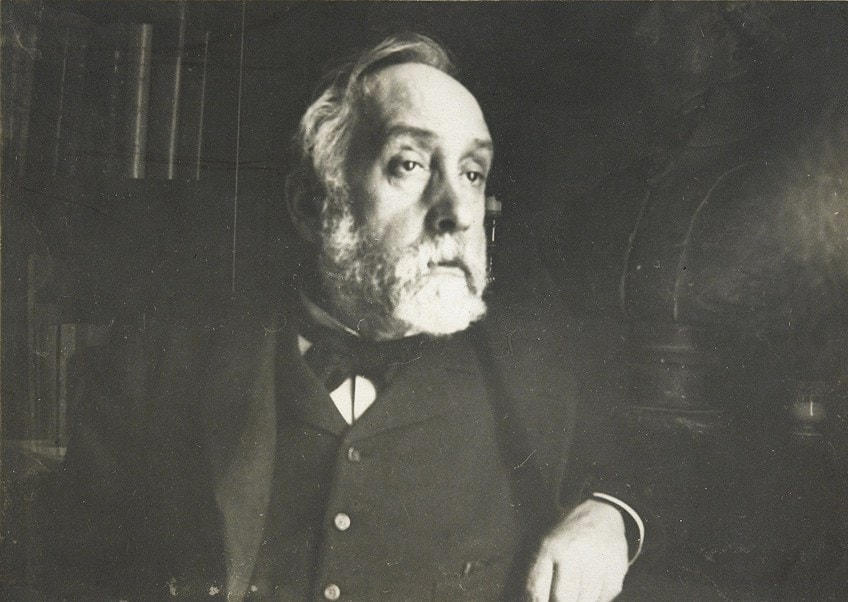
Despite being always remembered as an Impressionist artist, Degas never truly accepted the term and all that it stood for. Preferring to be viewed as a Realist artist, or even an “Independent” one, Degas believed that his professional training and subsequent artworks aligned themselves more accurately to the ideas and styles of the Realism art movement.
Nevertheless, he was one of the Impressionist group’s most important founding members, going on to organize most of their exhibitions and be viewed as integral to the style.
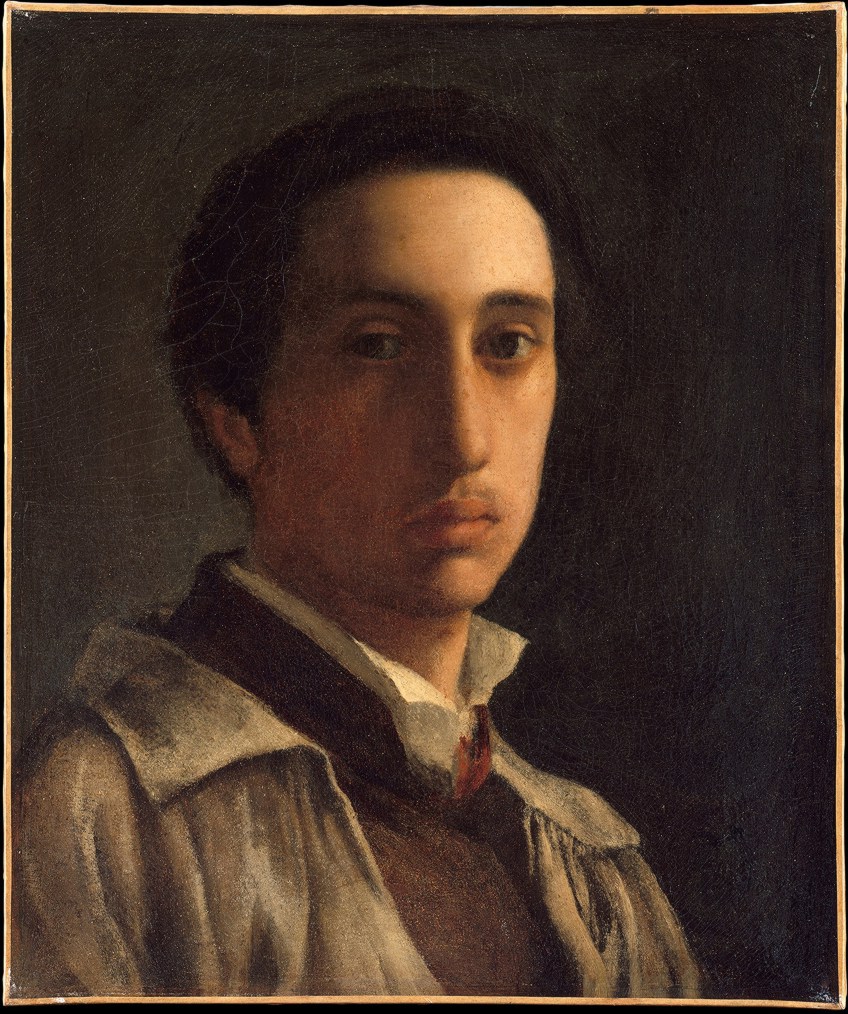
When viewing his works, it is clear to see why his style of art was labeled as Impressionism. Degas sought to capture momentary and intimate moments that occurred in the midst of modern life, which the style of Impressionism was built upon. However, he detested painting plein-air landscapes and rather focused on scenes such as theatres and cafés, which made use of unnatural lighting. Citing his rigorous academic training as the reason why he preferred painting indoors, Degas utilized these artificial elements to enhance his artworks.
An Edgar Degas Biography
Consistently memorialized as an Impressionist, French painter Edgar Degas displayed an artistic inclination from a young age. The eldest of five children, Degas began to paint early on in life and by the time he turned 18 years old, he had turned a room in his house into a fully-fledged artistic studio. Once he had graduated with a degree in literature, Degas became a copyist in the Louvre Museum in Paris, despite his father wanting him to pursue a career in law. Later on, he declared that working at the Louvre was the foundation for any real artist.
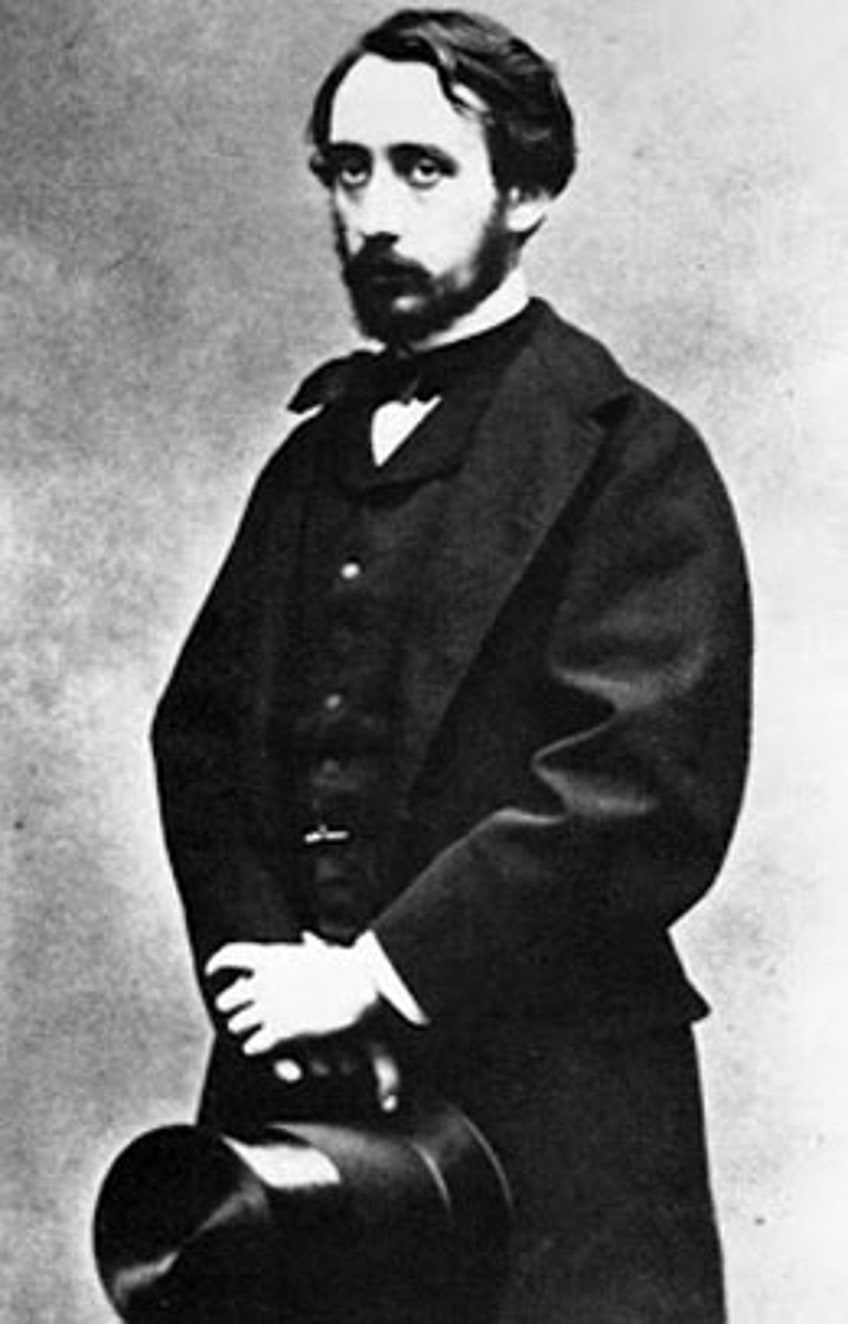
However, Degas felt a sense of duty towards his family and initially registered in law school. Applying little effort to his studies, Degas eventually gave up on his father’s ambitions to become a lawyer in 1853. This existed as a pivotal moment for him, as his choice to go after a full-time career as an artist led Degas to become the artist that we all know today.
As his career began to pick up, Edgar eventually changed his surname from “De Gas” to “Degas”, as he wanted a name that sounded less grandiose and aristocratic.
With the help of his father, Degas was admitted to the École des Beaux-Arts school in Paris in 1855, where he studied drawing and painting under the supervision of Louis Lamothe. While his father held a somewhat informed but conservative view in terms of his artistic preferences, he did everything to help develop Degas’ interest in painting. Surviving artworks from this period, like Young Spartans Exercising (c. 1860), show Degas’ talent and attention to detail, as well as the start of his serious explorations of the portrait.
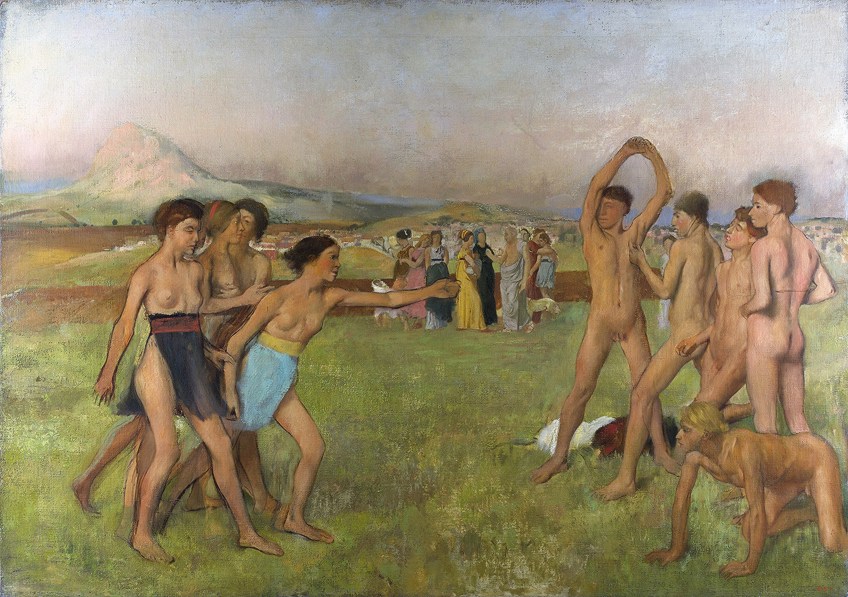
In 1856, Degas unexpectedly and impulsively deserted his artistic studies in Paris and began a three-year journey of traveling and studying within Italy. While there, he occupied himself with the painting and sculpture of antiquity, mainly focusing on the Italian Trecento and Renaissance. Degas worked in Naples, Rome, and Florence throughout his time in Italy, producing notebooks with drawings of faces, buildings, and landscapes. He also created countless hasty pencil copies of the many frescoes and oil paintings that he looked up to.
During this period, Degas was greatly influenced by the works of Michelangelo, da Vinci, Giotto, and Titian.
For years after his trip to Italy, the style and influence of these artists and their artworks would pervade in Degas’ own compositions. These notebooks proved to be priceless when understanding the start of Degas’ career, as they included many notes and reflections. Writing down ideas for his own figure-based paintings and diverse styles, his books suggested a serious young artist with high aspirations who had yet to find direction.
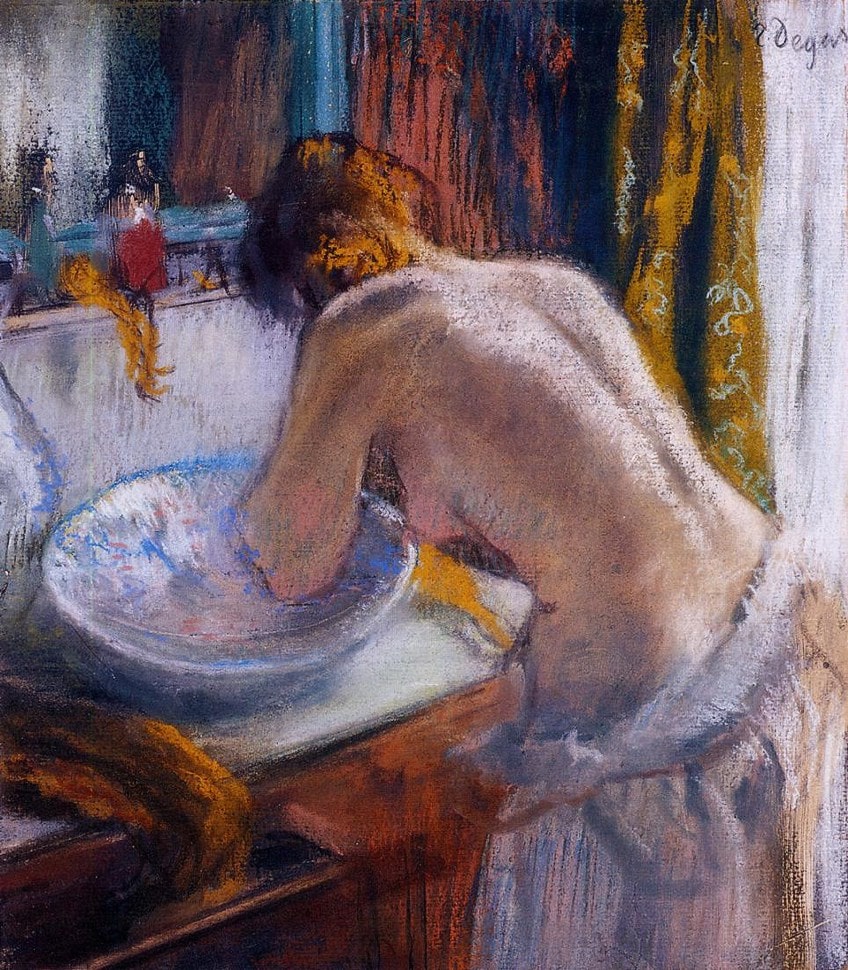
As Degas’ Impressionist style developed, he demonstrated a lasting fascination with the human figure, which was molded by his academic training. He worked to portray his interest in the human form in new and inventive ways, disliking the traditional Impressionist style that was used and very popular at the time. Edgar Degas paintings depicted figures that were represented from bizarre angles and in peculiar postures, usually under an artificial type of light. Examples include Dancer Adjusting her Slipper (1873) and La Toilette (1884 – 1886).
When viewing his works, Degas’ dismissal of the academic principles of mythical and historical subjects can be seen.
Instead, he chose to represent figures that existed in more modern situations. This began his career-long obsession with ballet and dancers, with his iconic ballerina paintings going on to become known as the “Degas ballerina” works. As his training promoted a strong classical tendency in his works, Degas relied on the feature of line to create solid compositions that were painted in an extremely academic and traditional way.
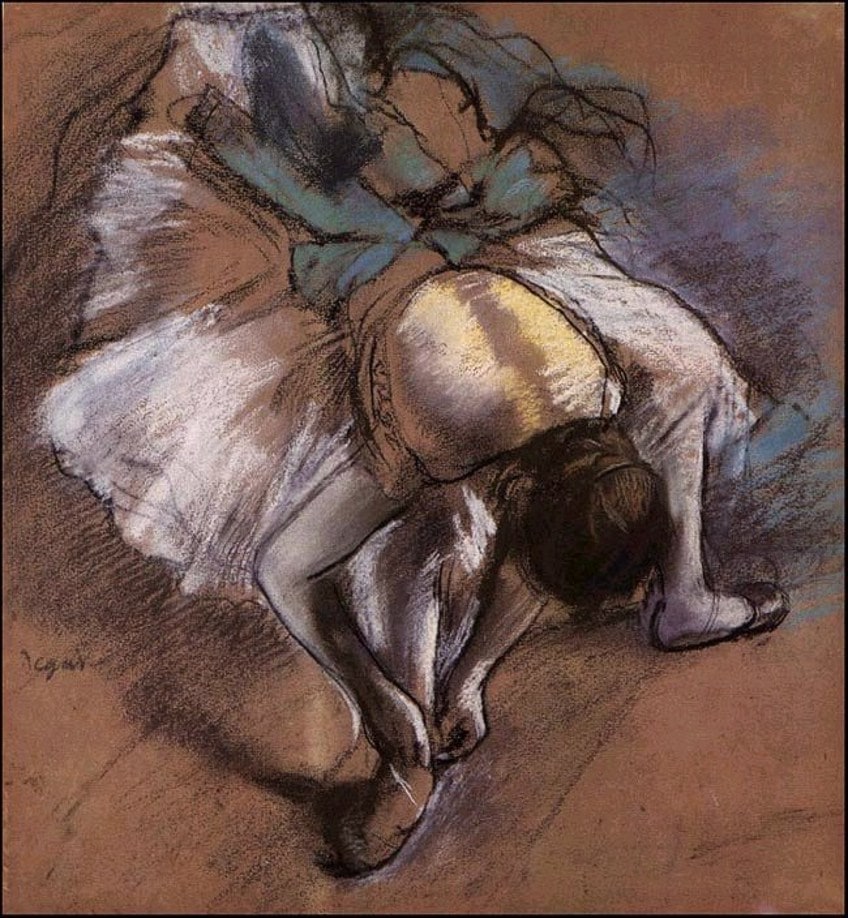
Despite being such an iconic artist, Edgar Degas was widely disliked for the representation of his female subjects. Applying an intriguing and confusing dichotomy in the way that he approached women in his paintings, Degas was accused of being sexist, with his paintings acting as evidence of this. While this was the reigning belief, Degas was also incredibly fascinated with the female form and worked to represent his figures in their most complete state through completing several meticulous preliminary studies.
While there is much debate about the truth of these accusations, his studies and paintings have been acknowledged for their involvement in furthering the exploration of the figure and the portrait in visual arts.
Degas proved to be an important member of the formative group of Parisian artists who began to exhibit Impressionist artworks together in the 1870s. Sharing many of their original techniques, he was particularly interested in the challenge of capturing the different effects of light and was mostly attracted to scenes that showed urban recreation.
Throughout the years, the Impressionist group staged eight independent exhibitions, with Degas exhibiting his works at each show. The year 1886 proved to be the last exhibition for the group in Paris, where Degas displayed 10 paintings of undressed women in the different stages of bathing. These paintings became the talk of the entire show, as they were a great source of controversy. Viewers remained divided over the subject matter, with some calling Degas’ models “ugly” while others praised the raw honesty displayed in his depictions.
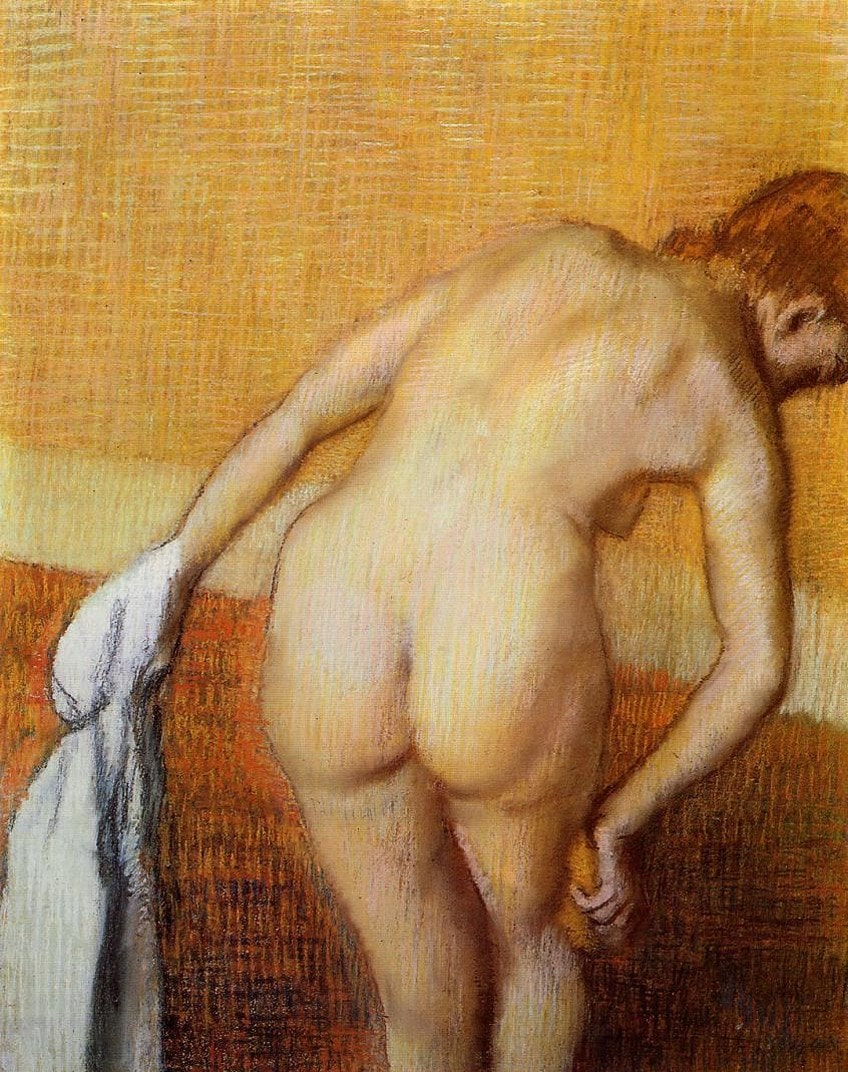
After the end of the Impressionist movement, Degas continued to paint. Inheriting great wealth from his family, he only sold his paintings when he wanted to. By the late 1880s, Degas’ eyesight began to deteriorate, which led to his sole focus on dancers and nude forms for the remainder of his career. Degas eventually turned to sculpture as well and created forms that portrayed both the fluidity of his dancers and the solidity of sculpture.
Remaining a proud Parisian until the very end, Degas passed away at the age of 83 in the capital city.
Edgar Degas’ Artist Style
Irrespective of the fact that Degas detested being called an Impressionist, this label stuck as an appropriate way to describe his artworks and the artistic style that he displayed throughout his career. A conceivable but somewhat inadequate description of the truly iconic works that he created, Degas differed greatly from the traditional Impressionists that were creating art at the same time that he was. One of the main differences was that he refused to paint en plein air, repeatedly mocking this process as he believed that painting inside a studio was superior.
While he viewed himself as an “anti-Impressionist”, his style of painting aligned him right within the movement.
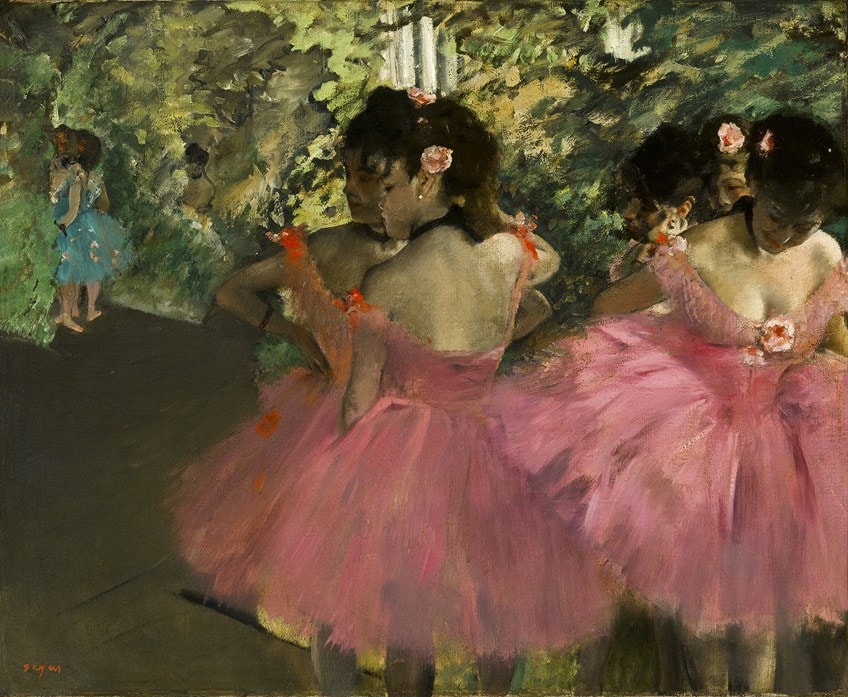
His backdrops of Parisian life, his off-balance compositions, his testing of different colors and forms, and his friendship with several notable Impressionist artists all related him very closely with the movement, to the point where he could not be considered as anything other than an Impressionist. His style reflected the deep admiration that he held for the old masters and his great admiration can be seen through the paintings that he produced.
For the majority of his career, Degas worked with a variety of different art materials, as he was captivated by both the delights and challenges that each material presented.
His drawings demonstrated his use of pen, ink, chalk, pencil, pastel, charcoal, and oil on paper and he frequently combined several materials in the same composition. However, his paintings revealed his use of different materials, as he chose to work with watercolor, gouache, distemper, oils, and metallic pigments within these artworks.
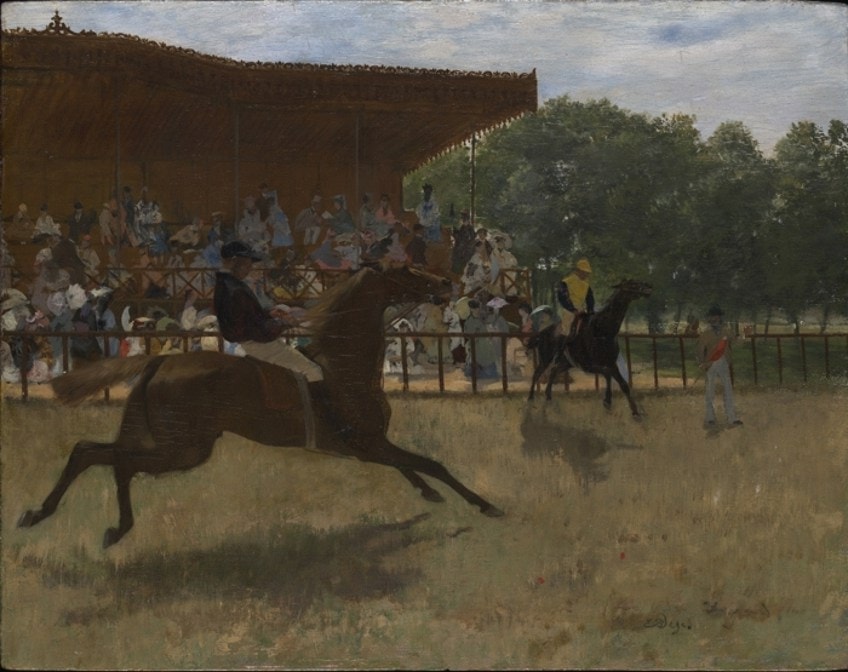
Seen as a superb draftsman, Degas quickly mastered the aspect of movement in his artworks, which generally focused on individuals and animals in motion. His most typical subject matter included ballet dancers, racehorses, and racing jockeys in addition to bathing female nudes and portraits. What made Degas’ artworks stand out was the sophisticated style that he had already developed in his early career, as seen through the iconic cropping of his subjects in an awkward way and his use of unusual viewpoints.
Use of Color and Line
From the start of his artistic career, Degas appeared to be fascinated by the features of line and color. Experimenting with the intensity of line and the sensual joys of color, Degas worked to combine these two elements in such a way that an air of tension was added to his compositions.
While Degas was studying in Italy, he meticulously reproduced the linear control seen within the artworks of expert Florentine artists like Michelangelo in his copies, before being captivated by the lure of Titian’s artistic style.
The Development of Edgar Degas’ Career
Degas went on to have an extremely long and impactful career as an artist, creating some paintings which are still spoken about and studied in detail today. When considering his career, it was broken down into his early period, his mature period, and his late period so that every aspect was covered. Below, we will be taking a look at each interval to better understand how Degas developed into such an iconic Impressionist artist.
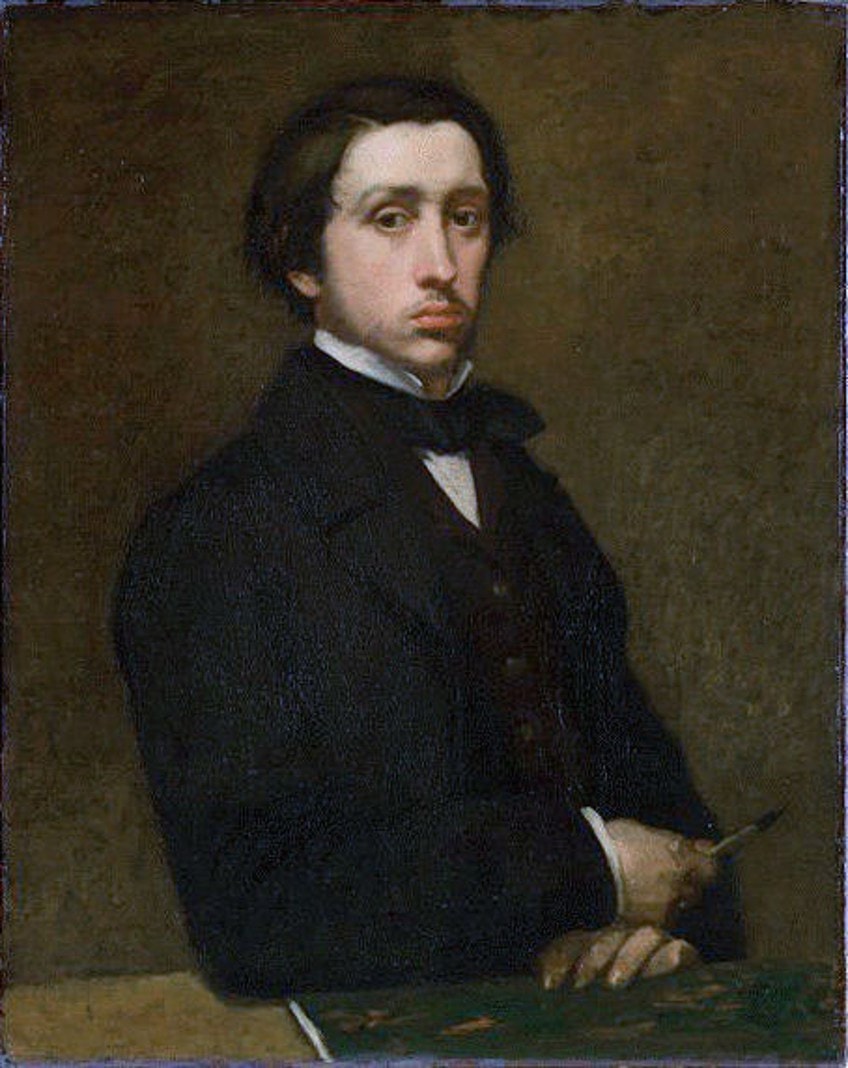
Early Period
In 1856, when Degas was only 22 years old, he embarked on a trip to Naples to visit family and to study the artworks of Italian greats. This trip proved to be incredibly beneficial for the development of his career, as Degas ended up spending three years in Italy while studying.
Spending numerous hours walking through the museums and galleries that Italy had to offer, Degas carefully studied the Renaissance artworks of the greats, which helped him to establish his own unique style.
In 1864, while Degas was copying an artwork by Velázquez at the Louvre, he met Impressionist artist Édouard Manet by chance, who had also come to study the same artwork. Forming a friendship with one another proved instrumental for both Degas and Manet, with their wildly different personalities bringing out the best in one another and furthering the entire Impressionist movement. They continued to work together throughout the eight Impressionist exhibitions that took place, with their friendship lasting until Manet died.

Mature Period
Degas produced most of his paintings throughout the 1860s, which were considered to be the most productive years in his career. However, his most celebrated and distinguished body of work was only created in the 1870s, where he created truly iconic paintings. It was also during this period where A Cotton Office in New Orleans (1873) was purchased by a museum, which was the first and only time in Degas’ life where a painting of his was bought.
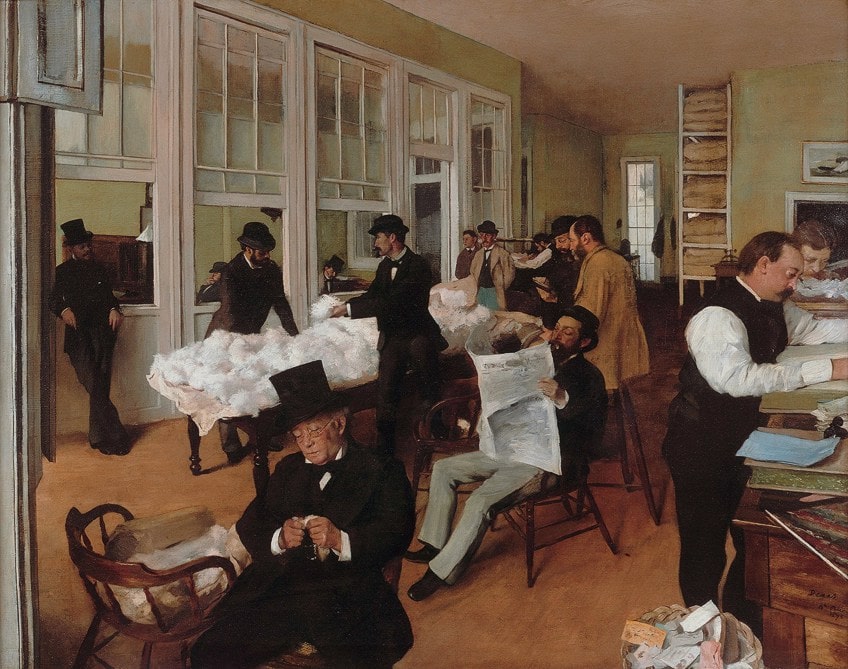
Paris became Degas’ muse, appearing in the majority of his works from the 1870s. Degas, along with other Impressionist artists, drew inspiration from the multitude of boulevards, cafés, dance studios, theatres, and operas that were situated in Paris. He went on to devote much time to capturing the details of these places and the people that frequented them in as much detail as possible.
This attention to detail greatly contradicted the ideas of Impressionism, which was one of the reasons that Degas rejected the label placed upon him.
Late Period
As the 19th century came to an end, the pace with which Degas produced artworks began to slow down quite drastically. Instead of painting or creating sculptures, Degas devoted most of his time to collecting the works of artists that he admired. This led to him buying artworks by Vincent van Gogh, Paul Gaugin, Édouard Manet, and Paul Cézanne, who all inspired the younger Degas at the start of his career.
The type of paintings and sculptures that Degas bought also stood as evidence of his continued devotion to capturing the female form.
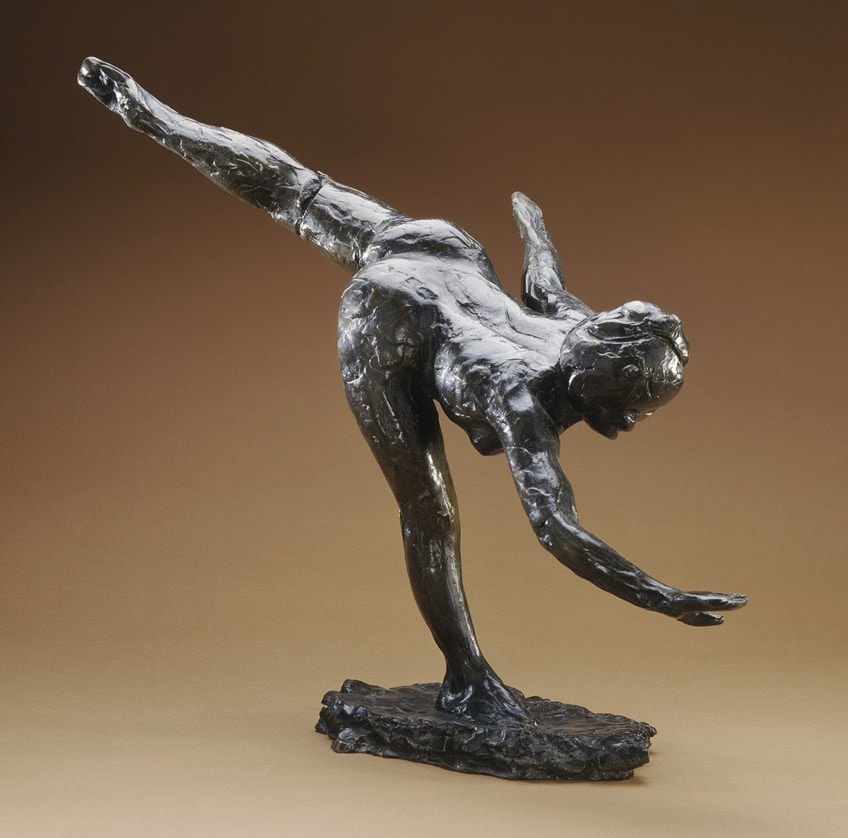
In the late period of his career, Degas rejected oil painting completely. Despite this, he carried on working with a variety of other mediums that included pastels, with sculpture emerging as his new and favorite medium of art. The reason that Degas showed a preference towards sculpture was also to do with his deteriorating eyesight, as sculpture was easier for him to work with than paintings. At this point in his career, Degas became more and more of a recluse, which ended most of his friendships with other artists.
The Significance of the Degas Ballerina
When viewing Edgar Degas’ paintings and other artworks, one subject, in particular, appears as his most captured. This great subject was the dancer, which Degas paid special attention to in the later years of his career. Going on to be nicknamed the “Degas ballerina”, the paintings which featured ballet dancers in many different scenes proved to be very popular.
Dance and movement captivated Degas, which led to his fascination with ballerinas. He chose to depict dancers in various stages and places, such as on stage or waiting behind the stage.
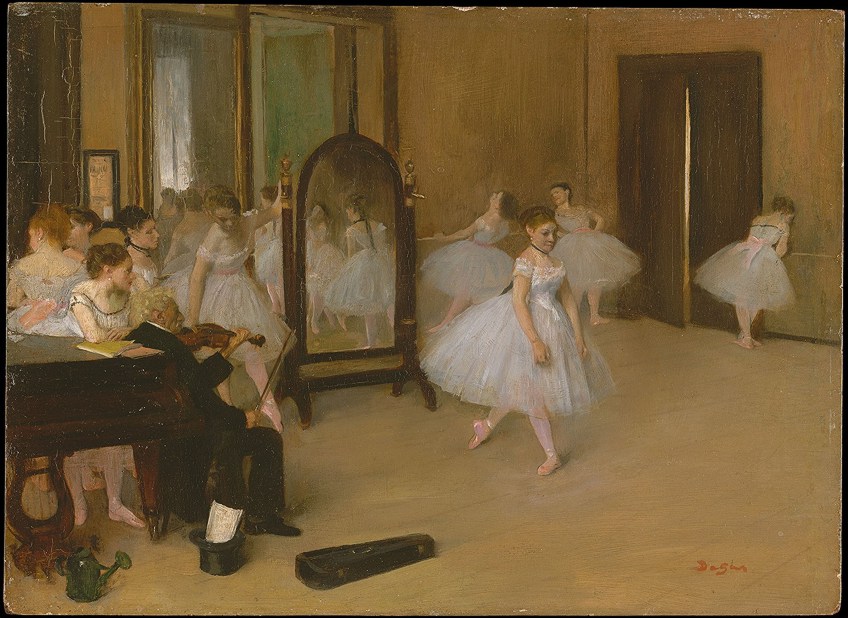
The obsession that Degas had with dancers was thought to be strange at times, as he sometimes portrayed them in quite compromising situations while they were getting ready to perform. However, the most common scene that Degas captured were dancers waiting in the wings. His captivation with dancers ran so deep that Degas frequently hired models to pose in his studio for his ballet scenes, which he was able to easily improvise and create based on familiar props.
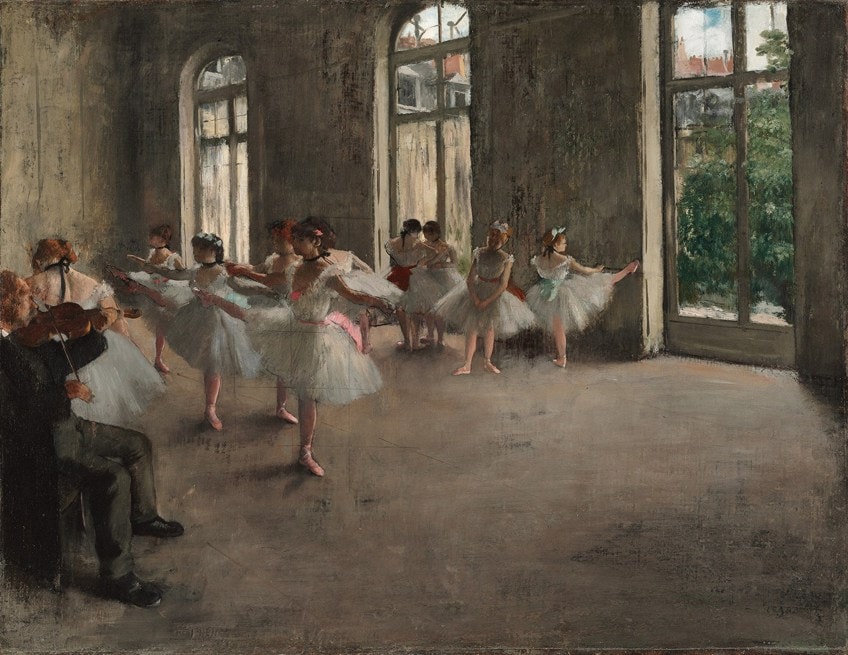
The ballerina paintings that Degas produced during this period, such as The Dancing Class (1872) and Ballet Rehearsal (1873), demonstrated his move away from the urban scenes and backgrounds that had previously inspired him. His paintings of dancers were fundamental encounters with the human form, with Degas portraying a rhythmic relationship between the bodies of the ballerinas.
Additionally, Degas hinted at a powerful type of individual presence in his paintings through the forceful way that he depicted the graceful and elegant dancers.
Most Celebrated Edgar Degas Paintings
French painter Edgar Degas is frequently listed among the most iconic artists to come out of the 19th and 20th centuries. His academic training and personal preference towards the style of Realism set Degas apart from the other Impressionist artists of his time, yet he was still grouped in with the dominant style of Impressionism. Creating countless artworks, Degas is remembered today for his unique style and fascination with dancers. Below, we will be taking a brief look at some of his well-known paintings.
The Bellelli Family (1858 – 1867)
| Date | 1858 – 1867 |
| Medium | Oil on canvas |
| Dimensions | 200 cm x 253 cm |
| Where It Is Currently Housed | Musée d’Orsay, Paris |
In 1856, while traveling throughout Italy, Degas paid a visit to his aunt, Baroness Bellelli, and her family. This resulted in the notable creation of The Bellelli Family, a Realist portrait that is often spoken about. While this work is impressive in its own right, what made it even more remarkable was the fact that Degas was only 22 years old at the time of painting this portrait. Depicting his aunt, her husband, and their two little girls, Degas produced what was considered an unusual grouping of figures, as the man had his back to viewers.
Creating this portrait over a few years, it is believed that Degas drew each figure separately before combining them into a unique grouping.
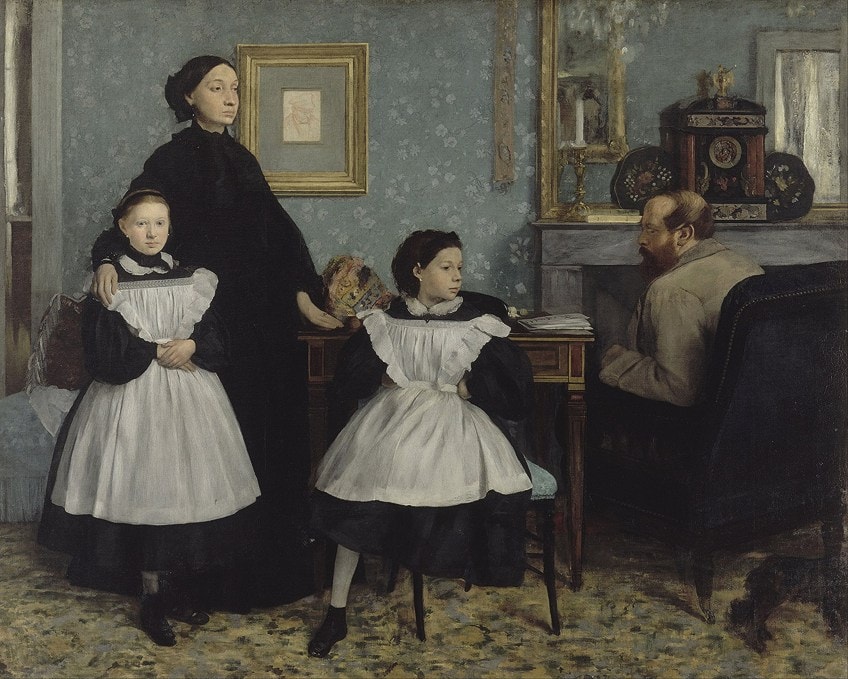
This was said to demonstrate the slightly unusual dynamic of the Bellelli family. As Degas had the chance to spend some time with his aunt and her family, it became known that they were not a completely happy and tight-knit family. His aunt was said to be quite disappointed in her husband, who was away from home frequently, and in the process of mourning her father at the time of this painting.
With its muted color palette, the feelings of frustration and discontentment within the family can be felt when looking at the portrait.
This also demonstrated Degas’ astonishing grasp of Realism at the time, as he was able to create an accurate depiction of the Bellelli family, including the emotions that were felt at the time. While it is technically classified as a portrait, this painting is considered to be more of a study of individual personalities, as each figure brought a new feature to the table.
The Ballet Class (1874)
| Date | 1874 |
| Medium | Oil on canvas |
| Dimensions | 85 cm x 75 cm |
| Where It Is Currently Housed | Musée d’Orsay, Paris |
One of the iconic Edgar Degas paintings that incorporate movement and ballet dancers is The Ballet Class. Commissioned by the celebrated French opera singer, Jean-Baptiste Faure, Degas worked hard on this painting before abandoning his original work and delivering a painting under a similar name to Faure. Within the painting, the end of a dance lesson instructed by ballet master Jules Perrot is depicted within the Paris Opera. As Degas and Perrot were great friends, he was allowed to sit in on the lesson and capture the dancers.
However, Degas frequently went to the opera house as both a backstage visitor and a general member of the audience.
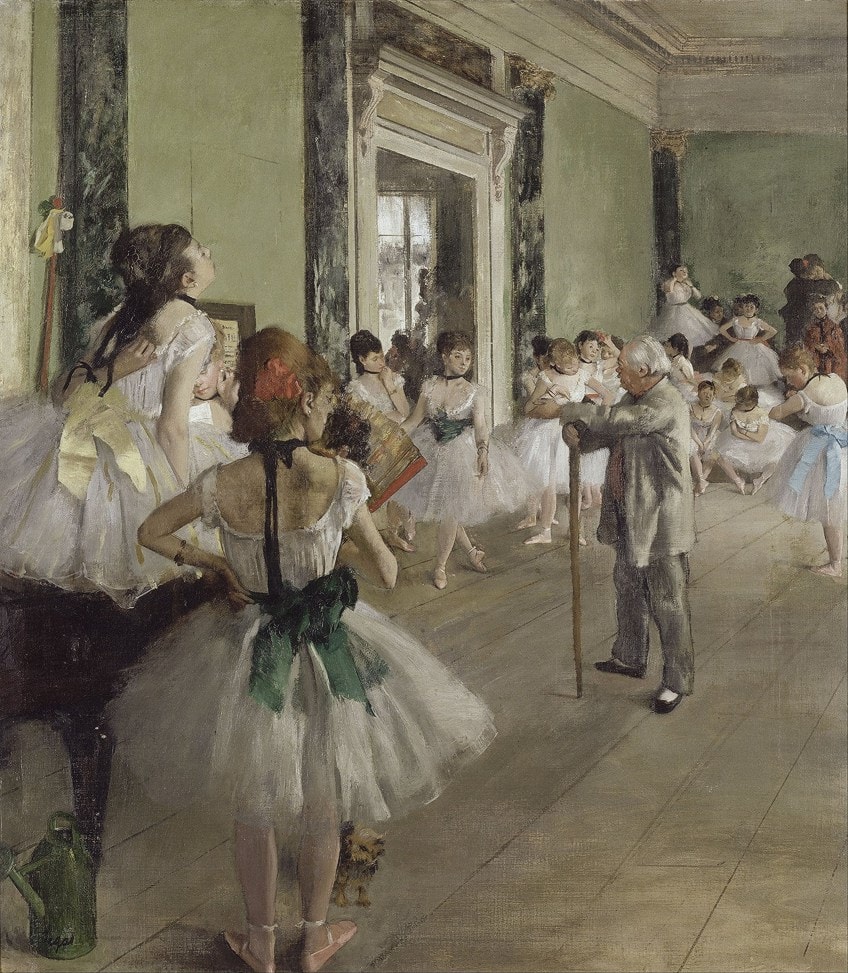
From the 1870s onwards, until he stopped producing paintings altogether, Degas’ favorite subjects to paint were ballerinas in the midst of dancing, in rehearsal, or resting. What made his artworks interesting was the fact that the training and dance rehearsals held more fascination for Degas as opposed to the final staged performances, with most of his ballerina works depicting them in the process of practicing.
When looking at The Ballet Class, a somewhat elevated viewpoint is given, which is further accentuated by the floorboards that run diagonally across the studio. This technique highlighted the distinct vanishing point in the painting, which worked to refocus the viewers’ attention on Perrot as the main subject.
L’Absinthe (1875 – 1876)
| Date | 1875 – 1876 |
| Medium | Oil on canvas |
| Dimensions | 92 cm x 68 cm |
| Where It Is Currently Housed | Musée d’Orsay, Paris |
Another notable painting by Edgar Degas was L’ Absinthe, which translated to The Absinthe Drinker or Glass of Absinthe. Depicting a man and woman sitting side by side and drinking a glass of absinthe, this painting was heavily criticized upon its first exhibition in 1876 for being too vulgar and unrefined.
Due to the bad reception that it received, the painting was put into storage and only exhibited again in 1892, where it was met with the same derision and condemnation.
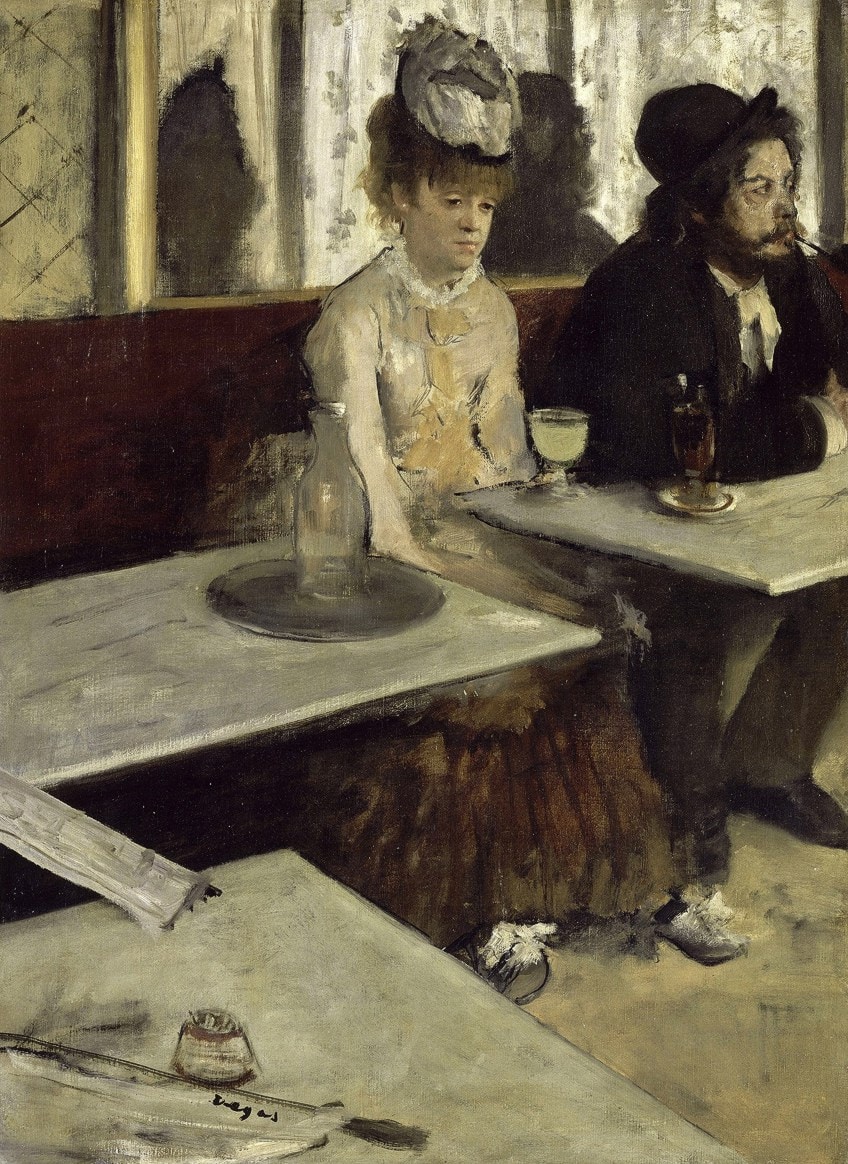
The two figures in this painting are said to be Ellen Andree, a distinguished French actress, and Marcellin Desboutin, who was an artist and eccentric personality at the time. Sitting at the Café de la Nouvelle-Athenes in Paris, the couple is shown to be completely absorbed in their own worlds while both sipping on a glass of alcohol. As absinthe was the drink of choice, this artwork was seen as a knock to morality as it depicted the deterioration of society. Additionally, Andree was labeled a whore for drinking so openly in public.
Notable Degas Sculpture Pieces
Degas only showed an interest in sculpture during the early 1880s during the time where his eyesight began to deteriorate, as it made painting increasingly difficult for him. Exhibiting his very first sculpture in 1881, titled The Little Dancer of Fourteen Years, Degas was praised for the extraordinary realism within the work but criticized for his “ugly” portrayal of the figure. Critics attacked the dancer statue as it made audiences feel very uneasy when viewing the work, leading to most of his other sculptural pieces going unseen.
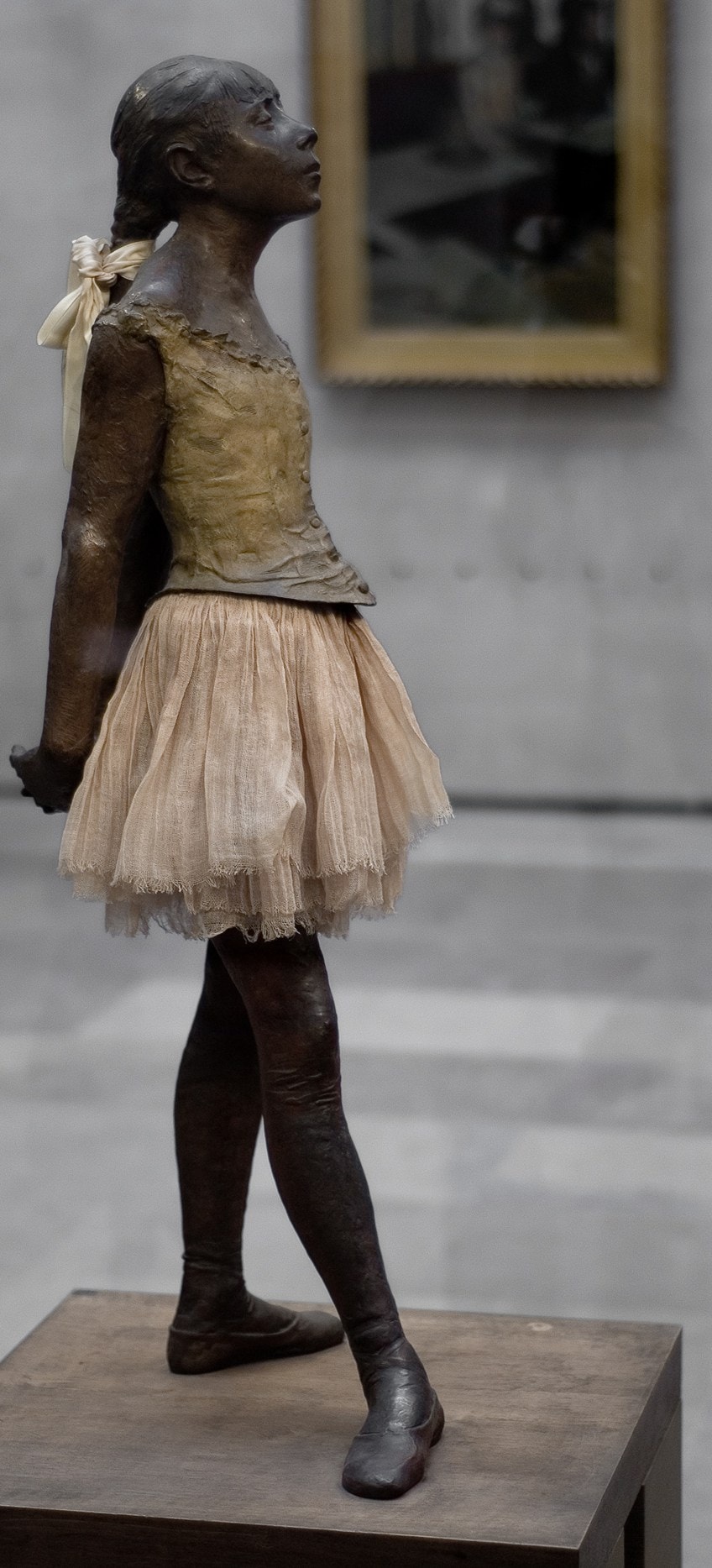
Over four decades, he created several purely Degas sculpture artworks. However, most of these pieces were only viewed by the public when a posthumous exhibition was held in 1918, a year after the artist had passed away. Degas’ genius, which was widely celebrated in painting, went equally acknowledged during his sculptural career.
What is interesting to note is that despite Degas completely reforming and changing the traditions of sculpture, none of his pieces were ever cast in bronze during his lifetime like other conventional sculptures.
After Degas passed away, about 150 wax sculptures were found in his studio. Many of these pieces had been abandoned, were deteriorating, and could not be salvaged. His heirs, to whom Degas had left all of his artworks, contacted a metalworks factory where 74 of the original sculptures were able to be saved and were eventually cast in bronze. Some of Degas’ more well-known sculptures include Dancer Moving Forward, Arms Raised (1882 – 1895), The Spanish Dancer (1885), and Seated Woman, Wiping Her Left Side (1896 – 1911).
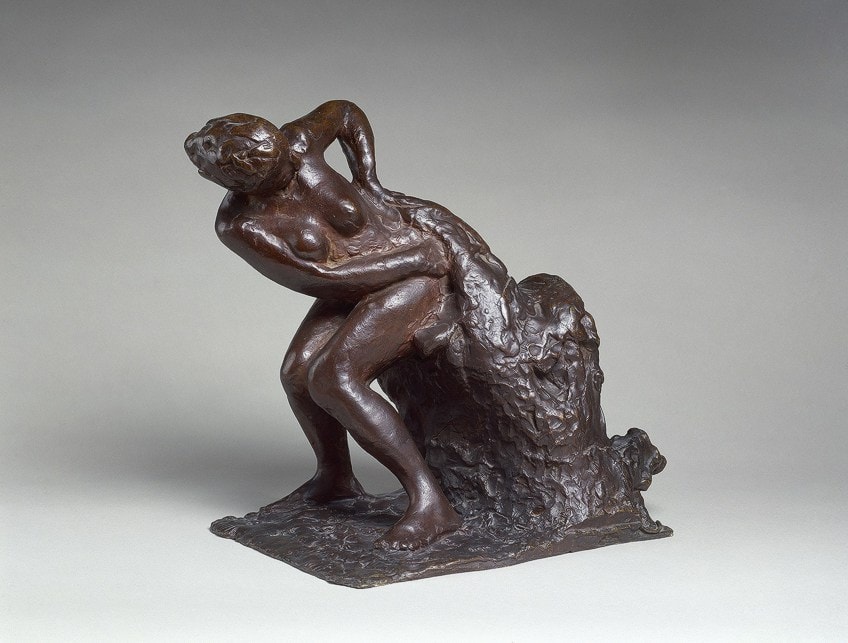
Important Exhibitions
As a member of the Impressionist group, Edgar Degas exhibited his artworks in all eight shows that the group put on. Disillusioned by the academic art Salon, Degas chose to join the group of young artists who were in the process of establishing their own independent exhibiting society, despite not agreeing with and conforming to the style of Impressionism.
Degas went on to exhibit with the group between 1874 and 1886 at the art shows that were put on, which became known as the Impressionist Exhibitions.
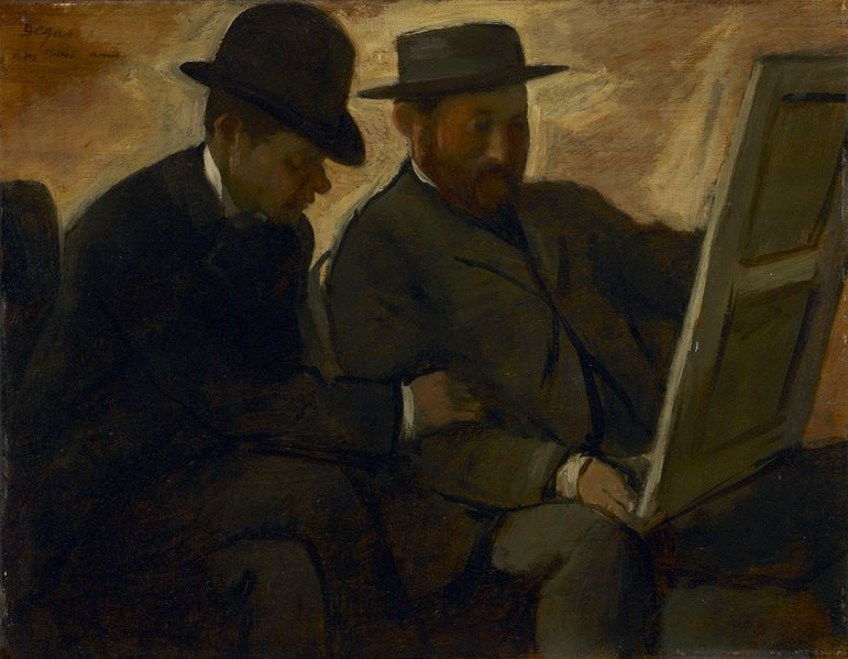
During this time, Degas took on a principal role and was largely involved with the organization of the shows. Despite his constant disputes with the other Impressionist artists in the group, Degas worked on all but one of the shows. The reason for the conflict was that Degas had little in common with the artists, specifically with Monet and the other landscape painters in particular. This was because he openly mocked their en plein air painting style, which was not well received by the traditional Impressionists.
As Degas was incredibly conservative when it came to his social attitudes, he detested the scandal that these Impressionist exhibitions caused, as well as the exposure and promotion that his colleagues desired from the shows. Additionally, he disliked being so closely associated with the Impressionist term, as the press and critics continued to include him within the larger group.
The disagreements that Degas had with the group led to much bitterness, which eventually resulted in the group going their separate ways in 1886.
The Legacy of Edgar Degas
Although Degas was heavily criticized during his career and lifetime, his reputation as one of the leading artists of late 19th century French art was guaranteed by the time that he passed away. His inclination towards Realism and his obvious difference from Impressionist artists afforded his work a greater appreciation, which has only increased since his death.
However, his work has been contentiously debated about for the most part, as his portrayal of women and the subsequent images that he produced were heavily criticized for their sexism.
At the age of 50, Degas was said to have confessed to his friends that he felt an increasing disenchantment with his career. He was already known for his hostility towards those who visited his studio during his working hours, which led to Degas becoming known for his uncompromising dedication to the creation of art and his animosity towards those who were simply interested. Degas eventually became very isolated, despondent, and prone to periods of depression, which was all attributed to his progressive blindness.
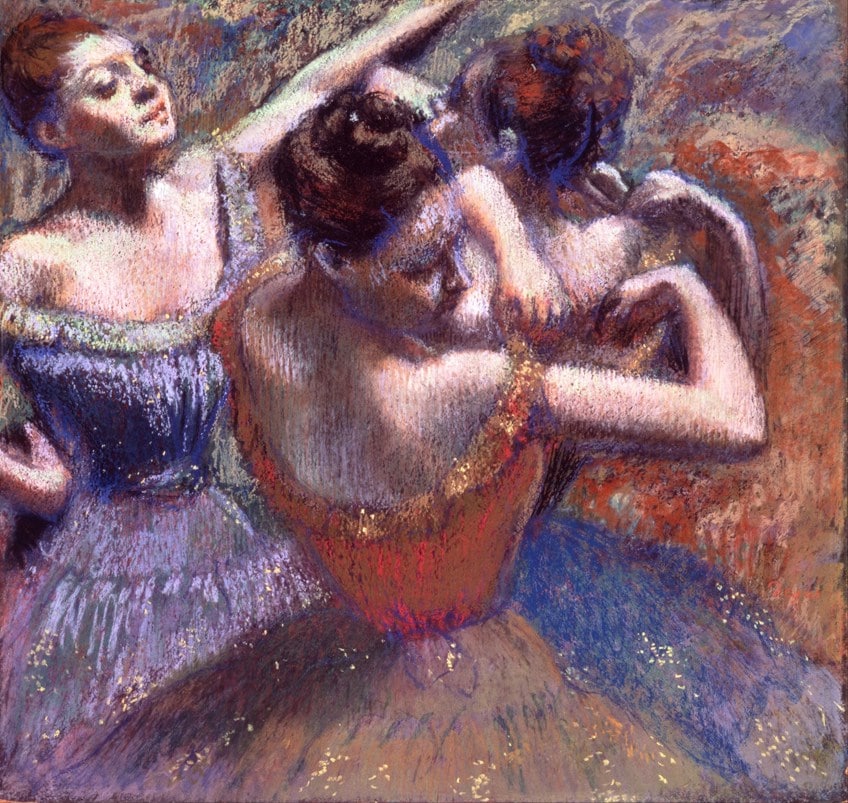
Degas continued to produce art as late as 1912 when he was already 78 years old. He was eventually forced to leave his studio in Montmartre, Paris, where he had worked for more than 20 years. Degas passed away only five years after that, at the age of 83. It was not until after his death that the true abundance of his artistic output was revealed in a series of public sales that took place between 1918 and 1919. During these auctions, thousands of previously unexhibited artworks were discovered and sold.
When viewing the rise of his reputation, Degas displayed a very unusual trajectory.
His popularity only rose during his mature period, with this all being thwarted by his resentful retreat in his old age. Degas’ reputation suffered further from his opinion of the scandalous Dreyfus Affair, which greatly divided the French from the 1890s until the early 1900s. Degas went on to end all of his relationships with his Jewish friends and publicly denied his previous friendships with Jewish artists, leaving him to become an outspoken anti-Semite.
Overall, the public reaction towards Degas’ artworks ranged from appreciation to contempt. While he led an uninteresting and somewhat tedious life on the outside, Degas was well-known for his wit in addition to his art, which was said to often be cruel. Despite being frequently labeled as bad-tempered, Degas produced artworks that were greatly admired for his skill and draftsmanship. If you have enjoyed reading about this contentious artist, we encourage you to research some of his other artworks.
Suggested Reading
The above Edgar Degas Biography gives a brief insight into the world of the iconic Impressionist artist, who hated having to conform to all of the traditions associated with the art world. If you would like to learn more about his early days, the birth of his career, the impact of his Degas dancers paintings, and the entire oeuvre of his life, then we can suggest the following book for you.
Degas (2016) by Bernd Growe
Including about 100 illustrations of his most well-known works, this book takes you on the incredible journey of Degas’ life, starting from his childhood and the beginning of his career to his involvement in the iconic Impressionist movement and the end of his artistic creation. Covering the historical and cultural impact that Degas and his artworks had on both the art world and society, this book is a must-have if you are looking for a comprehensive and captivating book on the artist.
Also read our edgar degas paintings web story.
Frequently Asked Questions
Why Was the Degas Artist Style Seen as So Important?
In addition to being acknowledged as a significant artist during his lifetime, Degas is also seen as one of the key founders of Impressionism today. Although his work intersected many stylistic boundaries, his mere involvement with other major Impressionist artists and their exhibitions landed him firmly within the movement. Degas’ greatness as an artist was seen in his bold color experimentations, his dynamic paintings, and his realistic sketches of ordinary life, which saw him being recognized as one of Impressionism’s greatest artists.
Did Degas Teach Any Students?
Despite his prominence, Degas was not known to have taken any formal pupils in for training. This was partly due to his hostile temperament, as not everyone got along with him. However, he has been cited as a major influence for several important painters, such as Mary Cassatt, Jean-Louis Forain, Walter Sickert, and Henri de Toulouse-Lautrec. His professional relationship with Cassatt was widely publicized, as they helped further each other’s careers. However, they eventually fell out over Degas’ controversial views on the Dreyfus Affair.
Isabella studied at the University of Cape Town in South Africa and graduated with a Bachelor of Arts majoring in English Literature & Language and Psychology. Throughout her undergraduate years, she took Art History as an additional subject and absolutely loved it. Building on from her art history knowledge that began in high school, art has always been a particular area of fascination for her. From learning about artworks previously unknown to her, or sharpening her existing understanding of specific works, the ability to continue learning within this interesting sphere excites her greatly.
Her focal points of interest in art history encompass profiling specific artists and art movements, as it is these areas where she is able to really dig deep into the rich narrative of the art world. Additionally, she particularly enjoys exploring the different artistic styles of the 20th century, as well as the important impact that female artists have had on the development of art history.
Learn more about Isabella Meyer and the Art in Context Team.
Cite this Article
Isabella, Meyer, “Edgar Degas – Exploring the Life and Art of this French Painter.” Art in Context. January 1, 2022. URL: https://artincontext.org/edgar-degas/
Meyer, I. (2022, 1 January). Edgar Degas – Exploring the Life and Art of this French Painter. Art in Context. https://artincontext.org/edgar-degas/
Meyer, Isabella. “Edgar Degas – Exploring the Life and Art of this French Painter.” Art in Context, January 1, 2022. https://artincontext.org/edgar-degas/.







